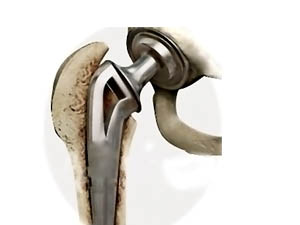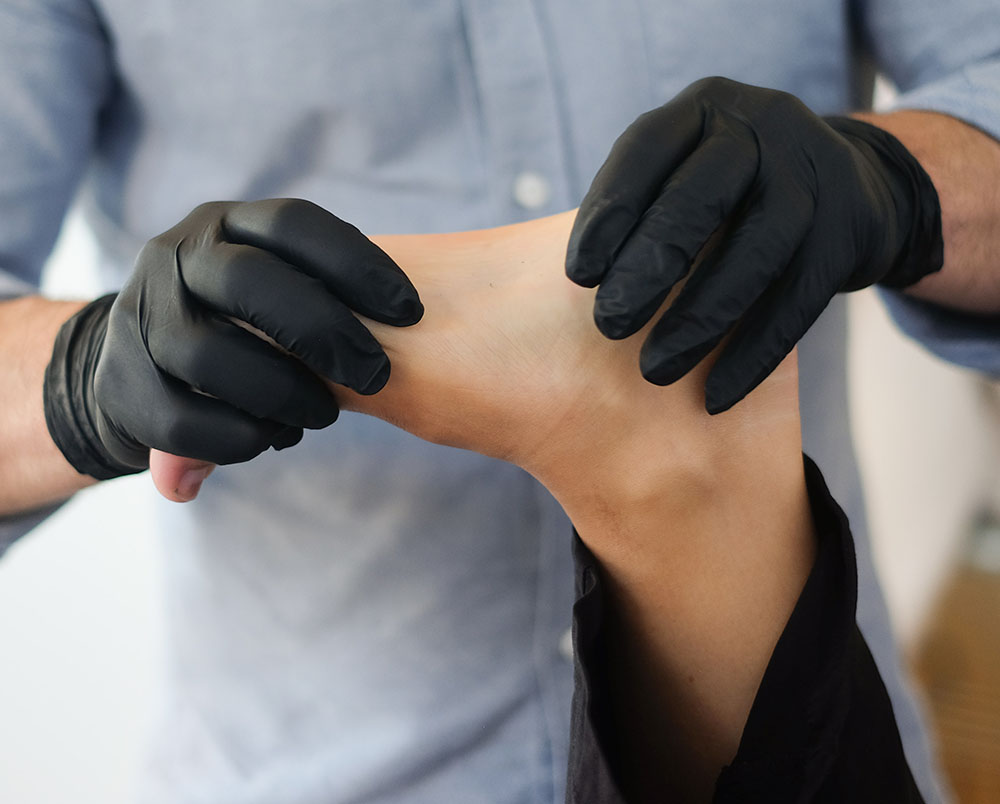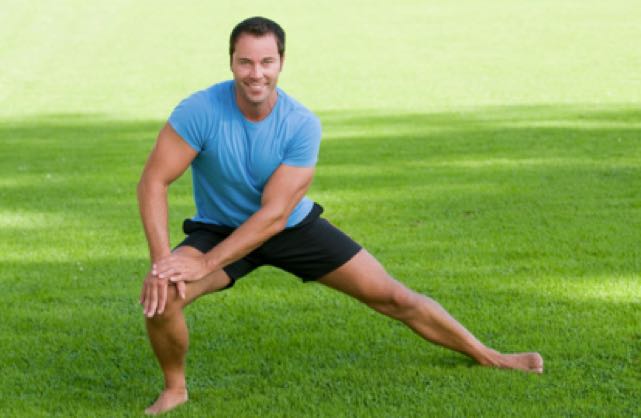Myofascial Care
Fascia
Muscles are covered in a film called fascia, which made up of tightly packed collagen and elastin fibers. This web of connective tissue can create knots of tissue in overused areas of the body, which is extremely common in baseball pitchers in the areas of eccentric stress – the posterior shoulder being the biggest culprit in this case. Fascial tissue contains proprioceptors which gives it the ability to sense movement and change of direction, and keeping it pliable and in good shape is critical for proper function of the body.
The Golgi tendon organ (GTO) is a mechanoreceptor that’s located where a muscle meets the tendon, and it’s responsible for reporting the tension level of that muscle/tendon pairing. The GTO autoregulates tension to limit injury to the surrounding muscle and connective tissue, and by rolling across the tissue using a foam roller or Lacrosse ball, you can stimulate the GTO to help your muscles relax.
Self-Myofascial Release: Foam Rolling and Trigger Point Work
Self-Myofascial Release (SMR) is a tried and true method that helps to reduce adhesions in muscle tissue and allows your muscles to relax. We’ll be using two tools to get the job done, plus one optional tool for increased focus:
• Foam Roller
• Lacrosse (LAX) Ball (you can use a baseball)
A foam roller is great for body parts with large surface areas – your legs or upper back, for example. But for those hard to reach places, a LAX ball is what you need most. If you want to free up the posterior shoulder, glutes, and forearm, you need trigger-specific tools.
For all of the exercises listed in this chapter, you’ll want to determine the duration of the movement on your own. For the first few times you go over the tissue, you’ll probably experience serious tightness and possibly even pain. Be sure to go slow and roll out the tissue gradually, spending a lot of time on the “hot spots” you find. We’re looking for chronic positive changes over time, not necessarily acute benefits by beating yourself up on the first day! As you become more experienced with SMR techniques, you’ll know how long you’ll want to go to get the desired effects. For the beginners, a good rule of thumb is spending at least two passes across the affected area at a slow pace for a total of 15-30 seconds.
Hamstrings
Definition: The hamstrings are a group of muscles and tendons that are primarily responsible for flexing the knee and extend the hip. Their secondary function involves medially rotating the hip inwards.
Benefit: By keeping this muscle group pliable and free of adhesions, it ensures consistent stride direction, stride power, lead leg blocking strength, and lower half rotation.
Method: Use the foam roller to roll between the hip and knee
IT Band + Tensor Fascia Latae (TFL)
Definition: The iliotibial (IT) band supports movement around the knee. It often gets tight in athletes who move explosively laterally and therefore is a prime target for SMR. The tensor fascia latae (TFL) and surrounding musculature aids hip flexion, hip adduction, and hip internal rotation. The TFL is connected to the IT band.
Benefit: By keeping the IT band free of adhesions, knee pain is far less likely to occur. Quality of the blocking phase will go up if the IT band works properly. By keeping the TFL freed up, lateral explosiveness can be retained without risking strains in the lower half. If lateral knee pain is present, rolling out the TFL and IT bands should be the main targets.
Method: Use the foam roller to roll across the IT band. If adhesions continue, light trigger point work with a LAX ball may be necessary.
Quadriceps
Definition: The quadriceps are responsible for knee extension and hip flexion.
Benefit: By rolling out the quads on a regular basis, ideal hip flexion can be achieved in the delivery, ensuring good forward trunk flexion.
Method: Use the foam roller and The Stick to get deep into the muscle group.
Calves / Lower Legs
Definition: The calves and the muscles of the lower legs are responsible for movement at the ankle and knee. There are multiple groups of muscles, but they can all be hit in a few passes of a foam roller with creative positioning of the lower leg!
Benefit: By rolling out the lower legs, good flexibility and mobility of the ankle and knee is retained, optimizing the stride phase and blocking phase of the delivery.
Method: Use the foam roller and The Stick to get deep into the muscle group, rotating the lower leg as you go through the entire area. A LAX ball may be required for deeper areas or especially hot zones.
Glutes
Definition: The glutes dominate total hip movement, including extension, abduction, and external rotation.
Benefit: By rolling out the glutes, a neutral and slightly extended lumbar posture is easier to maintain throughout the delivery, reducing the chances of lower back pain. Additionally, force is better transmitted through hip extension and rotation if the glutes are firing properly.
Method: Roll out your butt with a foam roller and a LAX ball in specific tight areas.
Plantar Fascia
Definition: Plantar fascia connects the toes to the Achilles tendon.
Benefit: By rolling out the bottom of the foot, ankle mobility stays high. Since the plantar fascia starts all movement that requires extension of the lower half, it’s a critical area to keep pliable.
Method: Take your shoes off and roll the bottom of the foot with a LAX ball.
Triceps
Definition: Triceps extend the elbow, one of the most critical movements in the pitching delivery.
Benefit: By rolling out the triceps on a regular basis, range of motion is maintained at the elbow which promotes a healthy arm and proper transmission of force in the last movement in the kinetic chain before ball release.
Method: Pin a LAX ball against a wall or on the ground and bend the elbow tightly. Roll at the insertion of the triceps by the elbow and hunt for tight spots. Use a foam roller to get a more general sliding surface reaction if you like.
Pecs / Chest
Definition: Pectoralis major/minor are responsible for horizontal adduction and internal rotation of the shoulder and often get tight in all baseball pitchers regardless of mechanical efficiency.
Benefit: By rolling out shortness in the pecs, posture will improve and optimal internal rotation will be available during the Driveline Phase of the delivery. Anterior shoulder stress will be reduced if the pecs are properly supporting the shoulder-scapular complex.
Method: Lay on the ground and pin a LAX ball in the pecs, rolling out and hunting for tight spots.
Latissimus Dorsi (Lats)
Definition: The lats have a huge cross-section and support deceleration of the arm as well as internal rotation, extension, and adduction.
Benefit: By rolling out the lats, it becomes much easier to maintain a low elbow position during the Pickup Phase of the delivery. Pitchers who have trouble with the elbow climbing too high generally have tight lats to go with mechanical inefficiencies.
Method: Roll the entire lat surface out with the foam roller or a LAX ball to get into the hot spots.
Medial Scapula Crest
Definition: The posterior shoulder stabilizes the shoulder joint and supports internal rotation.
Benefit: By mobilizing the medial scapula crest, the rotator cuff will work significantly better, producing better velocity and reducing the chance of soft tissue injury around the shoulder.
Method: Pin a LAX ball between your scapula and spine on the ground or against a wall and roll up and down, hunting for tight areas. Stabilize the LAX ball in various spots, reaching overhead and across the body to mobilize the shoulder.
Thoracic Spine (Upper Back)
Definition: The thoracic spine is the middle/upper vertebrae in the spine.
Benefit: By mobilizing the thoracic spine, the torso is free to rotate quickly – one of the biggest components of ball velocity.
Method: Roll from the mid-back to the base of the neck using a foam roller, but do not roll the lower back (lumbar spine).
Teres Minor / Infraspinatus
Definition: The teres minor and the Infraspinatus are two muscles of the rotator cuff that actively externally rotate the shoulder. These muscles also support deceleration of the pitching arm in the delivery.
Benefit: By mobilizing this group, keeping the forearm laid back in MER during the Driveline Phase will become easier and deceleration will be optimized during the Recovery Phase.
Method: Pin a LAX ball between the bottom of your shoulder blade and the floor while you lay on your back. Actively take your arm through external and internal rotation while the LAX ball is pinned, then hunt around for tight areas by moving your torso around.
Forearms
Definition: The forearm flexors and extensors help protect the elbow during the pitching delivery, absorbing a significant amount of force the ulnar collateral ligament (UCL) would otherwise take on.
Benefit: By mobilizing this group, the supination to pronation transition during the Driveline Phase will be significantly easier. By restoring a pliable surface in the flexor-pronator bundle, stress will be reduced on the UCL and the posterior bony structures of the elbow.
Method: Pin a LAX ball between the wall and your forearm and apply a lot of pressure by leaning into it. Roll the forearms out. If you need more work, pin The Stick against a power cage / squat rack and roll your forearm down the surface of The Stick while pronating and supinating at the forearm to capture the entire area.










